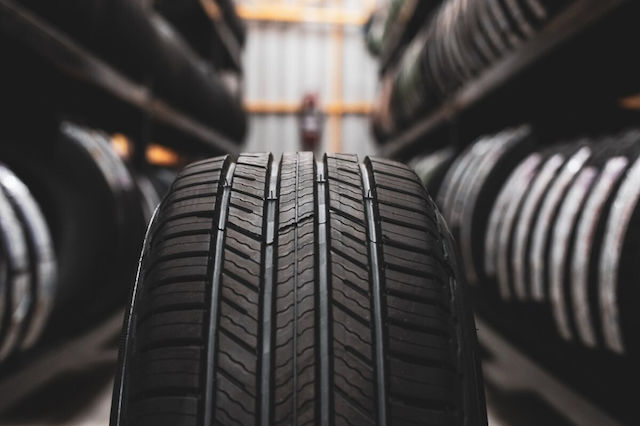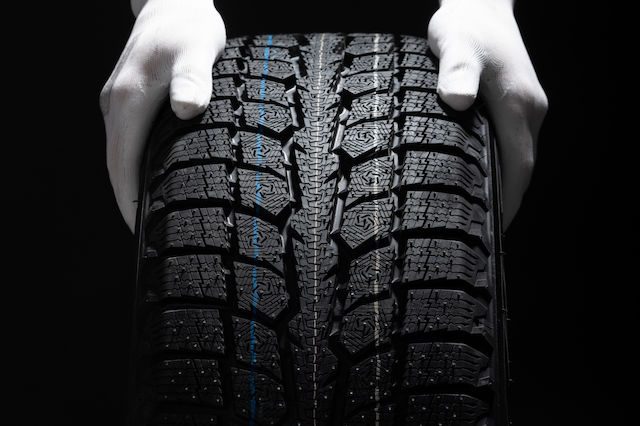What tires should I put on my car? A guide to buying tires
Tires are one of the most important components of your car. Since the safety and traction of the vehicle depend on them, it is essential to make the best possible choice when it comes time to replace them. To arrive at the right decision, you need to consider many factors and understand the needs of your vehicle, the type of road usage, the weather conditions in your area, and much more.
In the comprehensive buying guide that follows, we will present to you in detail and step-by-step the elements you need to take into account when selecting your tires. From understanding the dimensions and labels to maintaining and caring for your tires.
Step 1: Understand Your Needs
Before buying tires, you need to understand the needs of your car:
- Vehicle Type: The type of your car (e.g. Passenger, 4x4 / SUV, Light Truck) affects the choice of tires.
- Climate and Weather Conditions: Do you live in an area with frequent rain, snow, or high temperatures? This should be taken into account before making your choice.
- Type of Road Use: Do you use the car for daily commuting, trips, or racing?
Step 2: Understand the labels and characteristics of tires.
Important information includes:
- Dimensions (e.g. 205/55R17): The first number is the width of the tire, the second is the aspect ratio, and the third is the diameter of the rim.
- Speed and Load Indexes: Indicate the maximum speed and maximum load that the tire can support.
- Fuel Consumption, Wet Grip & Noise Label: This label evaluates fuel economy, the tire's grip in wet conditions, and its noise levels. More information about the energy label can be found in the guide below that explains all the markings of the new tire energy label.
- Types of Tires: Tires are categorized based on the season and their use, e.g., all-season, winter, and summer tires.
- Special Features & Markings: Some tires have special features and markings such as Runflat and XL.
How to recognize the dimensions and indexes of your tires?
When we refer to the size of a tire, we are actually talking about the following information which is found on the tire's profile:

- The first number informs us about the width of the tire e.g. 205 millimeters.
- The second number refers to the aspect ratio of the tire as a percentage e.g. 55. This ratio is derived from the height of the tire's profile and its width.
- The letter R refers to the type of tire e.g. the letter R means radial and is the internal construction of the tire (Radial).
- The number after the type refers to the diameter of the rim in inches e.g. 17 inches.
- The number e.g. 91 is the load index which corresponds to a maximum load that can be supported by a single tire.
- The letter e.g. V is the speed index which corresponds to the maximum speed at which a tire can carry its maximum load.
More information and correspondences for the above load and speed indices can be found at the end of the buying guide.
#Tipsbyskroutzteam: In addition to the side of the tire, you can find the exact dimensions of your tires in the car manual or on the sticker that is usually located on the side of the driver's door.

What are the differences between different types of car tires?
The main types of car tires are three, such as summer tires, winter tires, and all-season or 4-season tires.
How do summer and winter tires differ?

Summer car tires can be used in the summer, for example from April to October in high temperatures, as they are designed to increase grip on asphalt, reduce rolling resistance, and allow for smoother driving in snow-free periods.
Also, they are not suitable for use below 7ºC as they begin to lose their grip as the tire starts to harden.
Advantages:
- On dry roads, they offer reduced fuel consumption, reduced noise, and better grip than any other type of tire.
Disadvantages:
- On wet roads, they offer less grip.
What are the differences between winter tires?

The winter tires provide better performance in cold weather, which makes them a good alternative to using snow chains. These types of tires are ideal for snow and are more comfortable to use compared to snow chains. Mainly because you do not need to install anything and because you do not have to worry about issues such as damage that snow chains usually cause.
Additionally, winter tires are specially designed to allow you to drive on snowy and icy surfaces even in wet conditions. They are also suitable for driving on surfaces where the outside temperature is below 7 degrees. Winter tires are usually indicated by the M+S icon: Mud and Snow.
Advantages:
- They provide better grip and control of the vehicle in low temperatures and in conditions of snow and ice.
- They offer lower rolling resistance in snow and ice conditions resulting in reduced fuel consumption.
Disadvantages:
- They usually require changing twice a year, once in the fall and once in the spring.
- They provide reduced performance at high temperatures.
What are the differences between 4-season tires?

The all-season tires are tires that can be used in both winter and summer. They offer better performance in cold climates as well as in environments with high temperatures. However, they cannot fully replace summer or winter tires as they do not provide 100% the same performance. For this reason, you might want to take a look at the different types of snow chains in the complete buying guide for this specific category.
The choice and use of them depend on where you are geographically, as the climate of your area, where, for example, the outside temperatures are not very extreme and remain somewhat stable throughout the year, makes all-season tires ideal for you.
Advantages:
- They offer good grip and performance in mild conditions, such as dry or wet pavement.
- They can be used all year round without needing to be changed.
Disadvantages:
- They do not provide the same performance as winter or summer tires in extreme conditions, such as very low temperatures, heavy snowfall, or very high temperatures.
- They wear out faster than winter or summer tires because they have to cope with a wide range of weather conditions.
What do the special features XL and Runflat mean?
Some tires have the XL indication on the side, which means they can withstand additional load. These tires have been reinforced to carry heavier loads than standard tires of the same size. Therefore, this type of tires is usually used in heavier vehicles, e.g. SUVs.
Runflat tires are designed with reinforced sidewalls, which help support the weight of the car, allowing it to continue moving after a loss of pressure.

#Tipsbyskroutzteam:
Tire Age
It is supported that the production date of a tire does not affect its performance as long as it is stored in a dark and cool place. However, because in practice it is particularly difficult for tires to be stored under ideal conditions, it is recommended to avoid tires older than three years.
How to find out the production date of the tire?
Each tire has a four-digit number indicating its production date, which can be easily distinguished on the right side of the DOT marking. The first two digits refer to the production week and the last two digits refer to the production year. Specifically, if a tire has the production code "4020", then the tire was produced in the 40th week of 2020. (August 1st-7th).

How to find the right tire pressure?
The correct tire pressure is important for the optimal performance of your tires. Every aspect of driving is affected by under-inflation or over-inflation, so it is essential to know exactly what your tire pressure should be and to check it regularly.
The recommended pressure for your tires can be found in your vehicle's manual or, alternatively, it should be visible on the inside of the driver's door or on the fuel filler flap.
Driving with the correct tire pressure will ensure optimal handling and grip in all weather conditions. Additionally, tire pressure positively impacts braking distances and fuel efficiency.
Also, an incorrectly inflated tire wears out your tire treads faster, meaning you will need to replace them sooner. Therefore, using a tire pressure gauge is the ideal solution to know immediately if your tires need air or have the correct pressure.

If you have read all the above about tires but still have questions and inquiries, then ask us any question you have about car tires and someone from Skroutz will answer you as soon as possible!





Be the first to leave a comment!